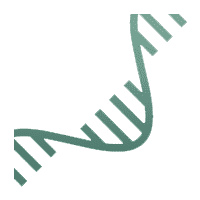Whole Transcriptome Sequencing
Overview
Features
Workflow & Data Analysis
Requirements
FAQ
Resources
Inquiry
Based on next generation sequencing, whole transcriptome sequencing provides a wide variety of applications from mRNA profiling to analyze of the entire transcriptome including both mRNA and non-coding RNA (miRNAs, lncRNAs, circRNAs). Our whole transcriptome sequencing enables a description of a competitive endogenous RNA (ceRNA) network for exploring the complicated post-transcriptional regulation mechanism.
Overview
RNA is a single-strand molecule formed during DNA transcription that is complementary to one strand of DNA. The mRNA determines the amino acid sequence of the protein and complete the process of genetic information transmission from RNA to proteins. Although non-coding RNAs such as miRNAs, lncRNAs, and circRNAs cannot be translated into proteins, they are functional RNA molecules through regulating gene expression at the post-transcriptional or transcriptional level. Profiling of coding mRNAs and non-coding RNAs is important for revealing molecular mechanisms of post-transcriptional regulation.
Whole transcriptome sequencing enables the complete profiling of both mRNA and non-coding RNAs (including microRNAs, lncRNA, and circRNAs) in a biological sample under specific conditions by combining RNA-seq with rRNA depletion and small RNA-Seq. It provide both qualitative and quantitative information on the whole transcriptome. In addition to the exploration of the competitive ceRNA network, whole transcriptome sequencing also has a wide variety of applications in clinical research and clinical diagnostics, ranging from standard gene expression analysis to advanced analysis such as pathway and alternative splicing analysis, revelation of cell type and heterogeneity, classification of tissue types and diseases, and prediction of biomarkers.
Service Portfolio
Powered by Illumina, Pacbio SMRT and Nanopore sequencing platforms, we offer services performed by de novo and reference-based transcriptome analysis of the global transcriptome response.
De novo transcriptome sequencing generates initial transcript sequences to analyze the transcriptome dynamics without reference genomes.Services can be applied to the research of animals, plants, and microorganisms.
Learn More
Reference-based transcriptome sequencing is widely used in model organisms to reveal disease pathogenesis, discover biomarkers, identify disease therapeutic targets, etc., advancing biomedical research.
Learn More
Features
| Any Species | Transcriptome-Wide | Bioinformatics Analysis | One-Stop Solution |
|---|
| This method can be applied to any species, from microorganisms to humans. | Profile all mRNAs, lncRNAs, circRNAs, and microRNAs, either known or unknown. | We provide a custom bioinformatics pipeline according to your project. | From sample QC, library construction, to deep sequencing and custom data analysis. |
Project Workflow

1. Sample Preparation
Quality assessment and quantification; ribosomal RNA depletion; fragmentation

2. Library Preparation
Size fractionation selection; 18~40bp insert cDNA Library; 250~300bp insert cDNA Library.

3. Sequencing
Illumina Nextseq/HiSeq; SE50, 7-10 Million Reads; PE150, >80 Million Reads

4. Data Analysis
Custom bioinformatics analyses according to your project.
Sample Requirements
- RNA sample (concentration ≥ 200 ng/uL, quantity ≥ 2 ug)
- 1.8 ≤ OD260/280 ≤ 2.2, RIN ≥ 7.0, 28S:18S ≥ 1.0.
- Please make sure that the RNA is not degraded.
Sample storage: RNA can be dissolved in ethanol or RNA-free ultra-pure water and stored at -80°C. RNA should avoid repeated freezing and thawing.
Shipping Method: When shipping RNA samples, the RNA sample is stored in a 1.5 mL Eppendorf tube, sealed with sealing film. Shipments are generally recommended to contain 5-10 pounds of dry ice per 24 hours.
Deliverable: FastQ, BAM, coverage summary, QC report, custom bioinformatics analysis report.
FAQ
-
-
What can I get form your whole transcriptome sequencing service?
Whole Transcriptome Sequencing is a comprehensive sequencing service aimed at detecting small RNA, circRNA, lncRNA, and mRNA. The purpose is to analyze their interaction networks within cells. The service involves creating two distinct libraries: one for small RNA data, with approximately 10 million data points, and another for lncRNA, circRNA, and mRNA data, with around 12 billion data points. Whole Transcriptome Sequencing typically requires a larger sample size compared to traditional transcriptome sequencing.
-
-
Do I need a reference genome for Whole Transcriptome Sequencing?
The need for a reference genome depends on your specific experimental design and research goals. Here are the different scenarios:
- Both species have reference genomes, with at least one being high quality: Ideally, both species should have reference genomes, and having at least one with high quality greatly simplifies the data analysis process.
- At least one species has a reference genome: If you're studying eukaryote-eukaryote interactions or eukaryote/prokaryote-prokaryote interactions, at least one species should have a reference genome. For species matching the reference genome, you can directly align the sequencing data. For species without a reference genome, there are two cases:
a. Eukaryote-eukaryote interactions: You can align the data to a closely related species' reference genome or use de novo assembly to process the data for further analysis.
b. Eukaryote/prokaryote-prokaryote interactions: For the prokaryotic part, you will need at least one reference genome. If there is no reference genome available, consider using methods like bacterial scanning to handle the data.
-
-
Are there different data volume requirements for different species and interaction types?
-
-
What are the library preparation and sequencing techniques for different host-pathogen combinations?
-
Library preparation techniques vary based on host and pathogen combinations:
- Eukaryote host-Eukaryote pathogen: We extract total RNA, enrich mRNA using polyA magnetic beads, and perform strand-specific library preparation.
- Eukaryote host-Prokaryote pathogen: We extract total RNA, perform reverse enrichment of RNA using ribosomal depletion kits, and conduct dUTP strand-specific library preparation.
- Prokaryote host-Prokaryote pathogen: We extract total RNA, perform reverse enrichment of RNA using ribosomal depletion kits, and conduct dUTP strand-specific library preparation.
For more detailed information about library preparation techniques, feel free to contact our technical support team.
-
-
How do I choose between the two modes of whole transcriptome sequencing?
Whole transcriptome sequencing offers two modes: one using two library construction and sequencing techniques, and the other is a high-capacity mode using three library construction and sequencing techniques. The main difference lies in how circular RNAs are studied. In one mode, you get a broad spectrum analysis of circular RNA expression, suitable for initial research. In the other mode, circular RNAs are specifically enriched and sequenced, enabling in-depth research, as well as the identification and quantitative analysis of low-expressed circular RNAs. Your choice between these two modes should be based on your research goals, requirements, and the depth of RNA analysis needed.
-
-
What is the sample quantity requirement for whole transcriptome sequencing?
The sample quantity requirement depends on the selected research mode. For the two library construction and sequencing modes (LncRNA+Small RNA), you'll need a minimum starting amount of 400ng of Total RNA. For the three library construction and sequencing modes (LncRNA+Small RNA+CircRNA), you'll require a minimum starting amount of 5.4ug of Total RNA. For more details, please refer to our Sample Submission Guidelines.
-
-
Can long non-coding RNA (lncRNA) sequencing results be used to analyze circular RNA (circRNA)?
Yes, the long non-coding RNA (lncRNA) library construction method involves ribosomal RNA depletion and fragmentation sequencing, effectively capturing all RNA types. This means that you can use lncRNA sequencing results to analyze circular RNA expression, making it suitable for studying circular RNA expression profiles in various species.
-
-
How effective is the quantification of mRNA in lncRNA sequencing data?
References:
- Jiang Z, Zhou X, Li R, et al. Whole transcriptome analysis with sequencing: methods, challenges and potential solutions. Cell Mol Life Sci. 2015,72(18): 3425–3439.
- Ye L, Zhou X, Huang F, et al. The genetic landscape of benign thyroid nodules revealed by whole exome and transcriptome sequencing. Nat Commun. 2017, 8: 15533.
* For Research Use Only. Not for use in diagnostic procedures.
Related Services:











